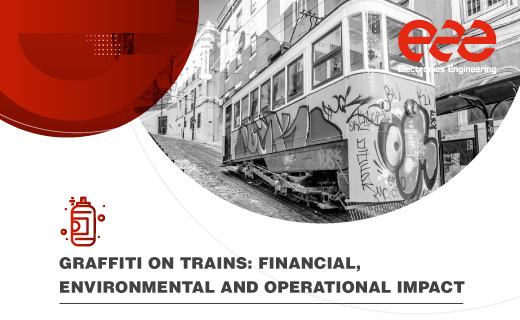Graffiti on trains is no longer simply a cosmetic issue. Its proliferation constitutes a real problem for the rail sector, with direct consequences in financial, environmental and operational terms. Not only do they damage the image of the service, these acts of vandalism generate costs in the millions each year and hamper daily train operations.
A cost that goes beyond painting
Graffiti removal tasks require specific technical means, specialised staff and, in many cases, the temporary removal of rolling stock. The latter involves not only the direct cost of cleaning, but also losses due to the unavailability of rolling stock.
Silent environmental impact
The intensive use of chemicals to remove paint also has a major environmental impact. Many of these substances are highly polluting and require special handling and disposal protocols. In addition, intensive cleaning processes, often carried out with pressurised water or solvents, can accelerate the deterioration of surfaces and materials, increasing the frequency of maintenance.
Operational risks and security
Although in most cases graffiti is limited to the exterior of trains, it can sometimes develop into more dangerous forms of technical vandalism. Interference with equipment, tampering with systems or simply trespassing poses an operational risk that can affect both service safety and punctuality. Graffiti is therefore not just a visual nuisance: it can also compromise system reliability.
The importance of prevention and detection
Against this backdrop, prevention has become a key strategic line of action. Thus, perimeter surveillance with early detection systems and even behavioural analysis and access control technologies are increasingly being used to mitigate these activities. Technological innovation also plays a crucial role in countering vandalism.










